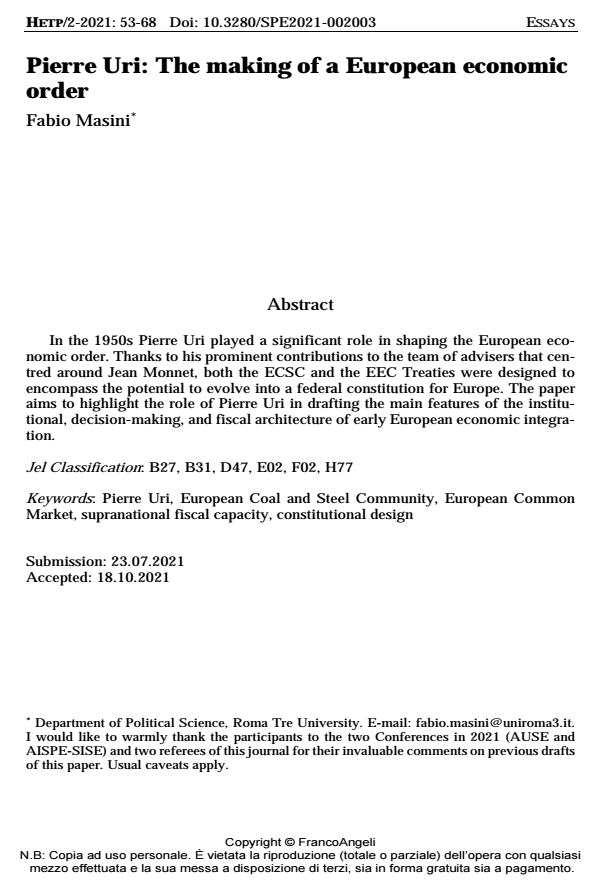Pierre Uri: The making of a European economic order
Titolo Rivista HISTORY OF ECONOMIC THOUGHT AND POLICY
Autori/Curatori Fabio Masini
Anno di pubblicazione 2022 Fascicolo 2021/2
Lingua Inglese Numero pagine 16 P. 53-78 Dimensione file 65 KB
DOI 10.3280/SPE2021-002003
Il DOI è il codice a barre della proprietà intellettuale: per saperne di più
clicca qui
Qui sotto puoi vedere in anteprima la prima pagina di questo articolo.
Se questo articolo ti interessa, lo puoi acquistare (e scaricare in formato pdf) seguendo le facili indicazioni per acquistare il download credit. Acquista Download Credits per scaricare questo Articolo in formato PDF

FrancoAngeli è membro della Publishers International Linking Association, Inc (PILA)associazione indipendente e non profit per facilitare (attraverso i servizi tecnologici implementati da CrossRef.org) l’accesso degli studiosi ai contenuti digitali nelle pubblicazioni professionali e scientifiche
In the 1950s Pierre Uri played a significant role in shaping the European eco-nomic order. Thanks to his prominent contributions to the team of advisers that centred around Jean Monnet, both the ECSC and the EEC Treaties were designed to encompass the potential to evolve into a federal constitution for Europe. The paper aims to highlight the role of Pierre Uri in drafting the main features of the institutional, decision-making, and fiscal architecture of early European economic integration.
Parole chiave:Pierre Uri, European Coal and Steel Community, European Common Market, su-pranational fiscal capacity, constitutional design
Jel codes:B27, B31, D47, E02, F02, H77
- Italy, 1982: the case for Ecu-denominated Treasury bonds Fabio Masini, Albertina Nania, in The European Journal of the History of Economic Thought /2024 pp.468
DOI: 10.1080/09672567.2024.2329053
Fabio Masini, Pierre Uri: The making of a European economic order in "HISTORY OF ECONOMIC THOUGHT AND POLICY" 2/2021, pp 53-78, DOI: 10.3280/SPE2021-002003